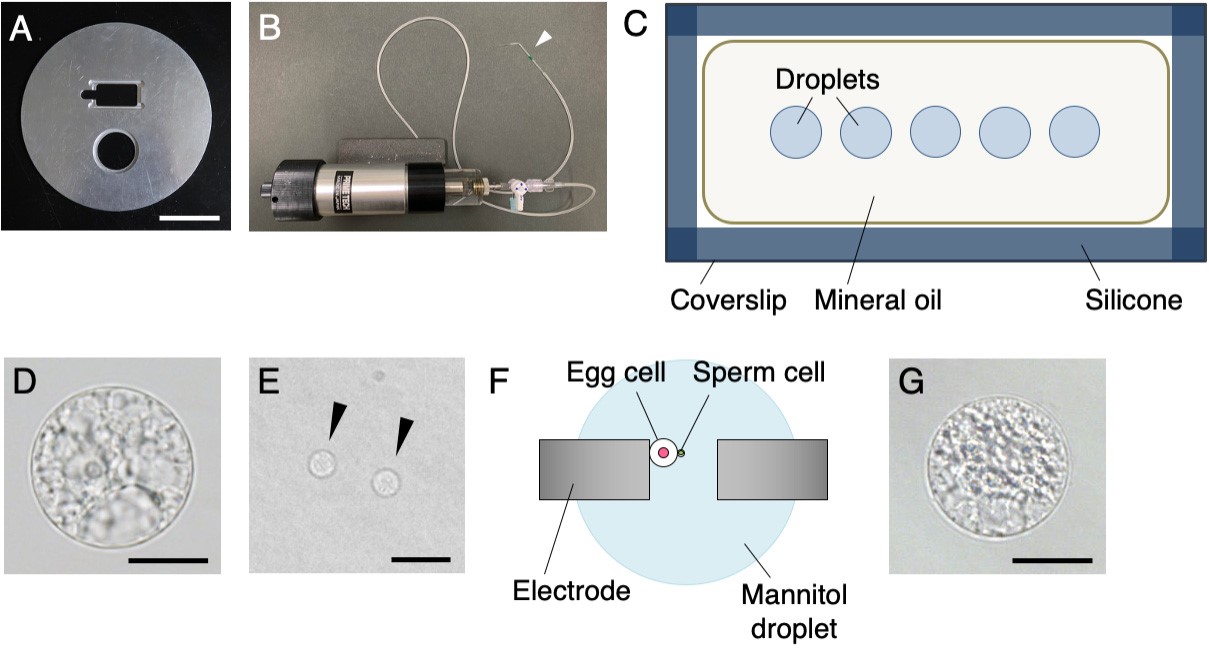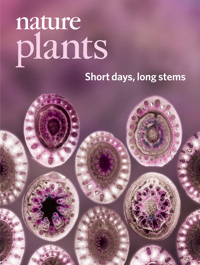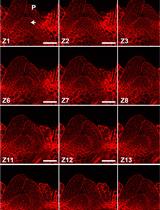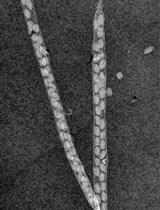- EN - English
- CN - 中文
Gene Expression and Genome Editing Systems by Direct Delivery of Macromolecules Into Rice Egg Cells and Zygotes
大分子直接导入水稻卵细胞和受精卵的基因表达和基因组编辑系统
发布: 2020年07月20日第10卷第14期 DOI: 10.21769/BioProtoc.3681 浏览次数: 4900
评审: Kumiko OkazakiDr. Ali AnwarAnonymous reviewer(s)
Abstract
Polyethylene glycol calcium (PEG-Ca2+)-mediated transfection allows rapid and efficient examination to analyze diverse cellular functions of genes of interest. In plant cells, macromolecules, such as DNA, RNA and protein, are delivered into protoplasts derived from somatic tissues or calli via PEG-Ca2+ transfection. To broaden and develop the scope of investigations using plant gametes and zygotes, a procedure for direct delivery of macromolecules into these cells has recently been established using PEG-Ca2+ transfection. This PEG-Ca2+-mediated delivery into rice egg cells/zygotes consists of four microtechniques, (i) isolation of gametes, (ii) production of zygotes by electrofusion of gametes, (iii) PEG-Ca2+-mediated delivery of macromolecules into isolated egg cells or produced zygotes, and (iv) culture and subsequent analyses of the transfected egg cells/zygotes. Because the full protocol for microtechniques (i) and (ii) have already been reported in Toda et al., 2016, microtechniques (iii) and (iv) are mainly described in this protocol.
Keywords: CRISPR/Cas9 (CRISPR/Cas9)Background
In angiosperms, fertilization and subsequent developmental events, such as embryogenesis and endosperm development, occur in the embryo sac deeply embedded in ovular tissue (Nawaschin, 1898; Guignard, 1899; Russell, 1992; Raghavan, 2003). Therefore, studies on post-fertilization events in the embryo sac have been conducted predominantly through analyses of Arabidopsis mutants or transformants coupled with live-imaging. Alternatively, direct analyses using isolated gametes or zygotes are possible, and an in vitro fertilization (IVF) system using the isolated gametes can be used to observe and analyze post-fertilization processes directly (reviewed in Wang et al., 2006). Isolated gametes can be fused electrically, following which the produced zygotes then divide and develop into embryo-like structures and regenerate into plantlets in maize, rice and wheat (Kranz and Lörz, 1993; Uchiumi et al., 2007; Maryenti et al., 2019). These cell manipuration techniques, such as isolation of gametes or zygotes and production of in vitro zygotes, make it possible to identify genes expressing in gametes, zygotes and embryos, and fertilization-induced/suppressed genes in zygotes and early embryos have been investigated (Sprunck et al., 2005; Ning et al., 2006; Yang et al., 2006; Steffen et al., 2007; Wang et al., 2010; Wuest et al., 2010; Ohnishi et al., 2011; Abiko et al., 2013; Anderson et al., 2013; Khanday et al., 2019; Rahman et al., 2019; Zhao et al., 2019). However, the functions of most of the genes expressing in a gamete-specific or fertilization-induced/suppressed manner have not been analyzed. Therefore, to broaden and develop the scope of investigations using gametes and zygotes, a procedure for direct delivery of plasmid DNAs into these cells has been established by PEG-Ca2+-mediated transfection. By using this procedure, approximately 30% and 70% respectively of PEG-Ca2+-transfected rice egg cells and zygotes showed exogenous and transient expressions of fluorescent proteins from plasmid DNA delivered into the cells (Koiso et al., 2017; Toda et al., 2019). Recently, it was shown that PEG-Ca2+-mediated ectopic expression of OsASGR-BBML1, an AP-type transcription factor, in rice egg cells resulted in induction of nuclear/cell division of the cells (Rahman et al., 2019). In addition, a genome editing system by direct delivery of CRISPR-Cas9 components into rice zygotes has been developed through PEG-Ca2+ transfection. Plasmid DNA harboring a Cas9-gRNA expression cassette or Cas9-gRNA ribonucleoproteins (RNPs) was transfected into zygotes, resulting in the regeneration of plants with targeted mutations in the range of 4%-64% (Toda et al., 2019). In addition to rice, complete IVF systems have also been established in maize and wheat (Kranz and Lörz, 1993; Uchiumi et al., 2007; Maryenti et al., 2019), with all three being the major crop species that provide the majority of human energy intake globally. Taken together, a combination of an IVF system and the present gene expression system described here has enormous potential for efficiently investigating post-fertilization events as well as helping to advance molecular breeding to improve these important crop species.
Materials and Reagents
- Coverslips (24 x 40 mm) (Thermo Fisher Scientific, catalog number: 125485J ) (siliconized at the edges with 3% dichlorodimethylsilane in diethyl ether, Figure 1C)
Note: Non-coated coverslips should be used, as using coated coverslips will lead to the cells becoming attached to the surface of the coverslip. - Non-treated plastic dishes with a diameter of 3.5 cm (Iwaki, catalog number: 1000-035 )
- Glass capillary
- Rice egg cells, sperm cells and zygotes (Figures 1D, 1E and 1G)
Note: Rice plants (Oryza sativa L. cv. Nipponbare or cv. Yukihikari) are grown in an environmental chamber at 26 °C in a 13/11 h light/dark cycle with a photosynthetic photon flux density of 150-300 μmol photons/m2/s. Under these growth conditions, panicles can be obtained throughout all seasons. Rice egg cells and sperm cells were isolated according to the full protocol described by Toda et al. (2016). Rice zygotes are also prepared using electrofusion as described in the same protocol.
Figure 1. Equipment and materials for cell manipulation (A-C) and preparation of isolated gametes and an in vitro zygote (D-G). A. Sliding stage for insertion of a coverslip and a plastic dish. B. Glass capillary-connected handling injector. White arrowhead indicates a glass capillary. C. Image of droplets inside the mineral oil on the siliconized coverslip. D. Isolated rice egg cell. E. Isolated rice sperm cells (black arrowheads). F. Image of electrofusion of an egg cell and a sperm cell using electrodes connected to an electrofusion apparatus. G. Rice zygote produced by electrofusion. Scale bars = 5 cm in A, 20 µm in D and G, and 15 µm in E. - Feeder cells: rice suspension cell culture (Line Oc, provided by RIKEN Bio-Resource Center, Tsukuba, Japan)
Note: Rice suspension cells, Line Oc, were subcultured once a week according to instructions from RIKEN Bio-Resource Center. No difference in feeder effects between freshly subcultured cells and 1-week-cultured cells has been observed. - Mannitol (FUJIFILM Wako Pure Chemical, catalog number: 133-00845 )
- 370 mosmol/kg H2O (330 mM) mannitol solution (autoclaved)
- 450 mosmol/kg H2O (385 mM) mannitol solution (autoclaved)
- Mineral oil (Sigma-Aldrich, catalog number: M5310-100ML )
- Absolute ethanol (FUJIFILM Wako Pure Chemical, catalog number: 057-00451 )
- Dichlorodimethylsilane (Tokyo Chemical Industry, catalog number: D0358 )
- Diethyl ether (FUJIFILM Wako Pure Chemical, catalog number: 055-01155 )
- MgCl2·6H2O (FUJIFILM Wako Pure Chemical, catalog number: 135-00165 )
- CaCl2·2H2O (FUJIFILM Wako Pure Chemical, catalog number: 038-19735 )
- 2-Morpholinoethanesulfonic acid, monohydrate (MES, C6H13NO4S·H2O, Dojindo, catalog number: 349-01623 )
- Polyethylene glycol 4000 (Sigma-Ardrich, catalog number: 81240-1KG )
- Single guide RNA (synthesized using the GeneArt Precision gRNA Synthesis Kit) (Thermo Fisher Scientific, catalog number: A29377 ), storage -80 °C
- Cas9 protein (Thermo Fisher Scientific, GeneArt Platinum Cas9 Nuclease; Thermo Fisher Scientific, TrueCut Cas9 Protein v2, catalog number: A36496 ), storage -20 °C
- The tRNA-based multiplex CRISPR-Cas9 vector (pMgPoef4_129-2A-GFP; accession number LC460477)
- Zygote culture medium, storage 4 °C
- Regeneration media, storage 4 °C
- Rooting media, storage 4 °C
Note: Recipes for zygote culture medium, regeneration media and rooting media are presented in Toda et al. (2016). - PrepMan Ultra (Thermo Fisher Scientific, catalog number: 4318930 )
- PrimeSTAR GXL DNA Polymerase (Takara, catalog number: R050A )
- ExoSAP-IT Express PCR Cleanup Reagents (Thermo Fisher Scientific, catalog number: 75001.200.UL )
- Zero Blunt PCR Cloning Kit (Thermo Fisher Scientific, catalog number: K270020 )
- MMG solution (see Recipes)
- PEG-Ca2+ solution (see Recipes)
Note: MMG solution and PEG-Ca2+ solution should be freshly prepared, as using old solutions results in decrease of PEG-Ca2+ transfection efficiency.
Equipment
- Forcep
- Inverted microscope (OLYMPUS, model: IX-71 or IX-73 )
- Sliding stage for the insertion of a coverslip and a plastic dish (Figure 1A)
- Manual handling injector (PrimeTech, HDJ-M3, Figure 1B)
- Glass capillaries made from 50 μl aspirator tubes (Drummond Scientific, catalog number: 2-000-050 ) (Figure 1B)
Note: The procedure for making glass capillaries is presented in Toda et al. (2016). - Electrofusion apparatus (Nepa Gene, model: ECFG21 )
- Manipulator (NARISHIGE, model: M-152 ) with a double pipette holder (Narishige, model: HD-21 )
- Electrodes (Nepa Gene, model: CUY5100Ti100 ) fixed to the pipette holder (Figure 1F)
- Millicell-CM inserts, diameter 12 mm (EMD Millipore, catalog number: PICM01250 )
- Environmental chambers
- Shaker for zygote culture (EYELA, model: Multi Shaker MMS-3020 )
- Osmometer (Gonotec, model: Osmomat 3000 basic )
Software
- Focas webtool (Focas UI, http://focas.ayanel.co/)
- RNA Folding Form software (mfold web server, http://unafold.rna.albany.edu/?q=mfold/RNA-Folding-Form2.3)
- Parallel Editor in GENETYX software (GENETYX)
- SnapGene Viewer (SnapGene)
Procedure
文章信息
版权信息
© 2020 The Authors; exclusive licensee Bio-protocol LLC.
如何引用
Toda, E. and Okamoto, T. (2020). Gene Expression and Genome Editing Systems by Direct Delivery of Macromolecules Into Rice Egg Cells and Zygotes. Bio-protocol 10(14): e3681. DOI: 10.21769/BioProtoc.3681.
分类
植物科学 > 植物发育生物学 > 形态建成
植物科学 > 植物育种 > 种子品质
细胞生物学 > 细胞分离和培养 > 3D细胞培养
您对这篇实验方法有问题吗?
在此处发布您的问题,我们将邀请本文作者来回答。同时,我们会将您的问题发布到Bio-protocol Exchange,以便寻求社区成员的帮助。
Share
Bluesky
X
Copy link












